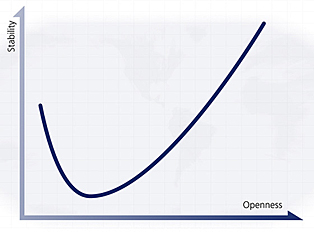
I don't remember much about my early years. As we were relatively poor (dad was a tailor and mum did typing for a solicitor), getting regular French Fancies & Corona lemonade deliveries was considered a status symbol. I ran around in the street with other kids of my age but I was fat. I was also very short for my age (insufficient GH from my pituitary?) and was rubbish at sports in primary school. Here's a photo taken when I was about 9 or 10. I'm the shortest boy in the picture.

Stripy shirts were all the rage, apparently. Even at this tender age, I used to regularly fall asleep after eating a plate of chips (that's fries, to Americans).
In secondary school, sports was dreadful what with having to play cricket using a cricket ball (instead of a tennis ball), contact sports, swimming and showers. Being short, fat & under-developed, I was embarrassed to get undressed in front of my peers, so I developed the art of forging sick notes in my mum's handwriting. I was a very sickly child! ;-D
My forging skills resulted in the total avoidance of swimming (also contact sports, cross-country running etc) and a big improvement in the quality of my handwriting! With tennis, I had to travel to a tennis court by train. I didn't mind doing that, as there were no showers at the tennis courts and I could play the game for a while until I overheated. Secondary school was where I developed a total hatred for almost all sports and when I left, that was the end of exercise as far as I was concerned. When I left secondary school at the age of 18, I was 4 feet 9 inches tall.
At university, I would have a cheese & ham salad baguette washed down with a can of Coke (non-diet in those days) for lunch, followed by a snooze.
At work, I would have a cheese & raw onion roll washed down with a can of Coke for tea-break, followed by a snooze. Here's me at the age of 26. At some point, my pituitary gland "woke up" and secreted GH, as I grew to 6 feet 1 inch tall in my late twenties.

I did manage to get some work done!
When I was dating, I jogged/walked for over 4 miles a day to see my girlfriend. I got slim. After I married, that stopped and as I was a skint Electronic Engineer and Lesley was a skint Cake Decorator, my diet was predominantly cheap carbohydrates, like bread, pasta, potatoes & rice. The result? Lots of snoozes + lots of weight gain. I was a lazy git, apparently.
In 1992, Lesley left to live with her mother. In 1994, I started dating Eileen. At parties, I became (in)famous for falling asleep after eating nibbles made from refined carbohydrates.


















